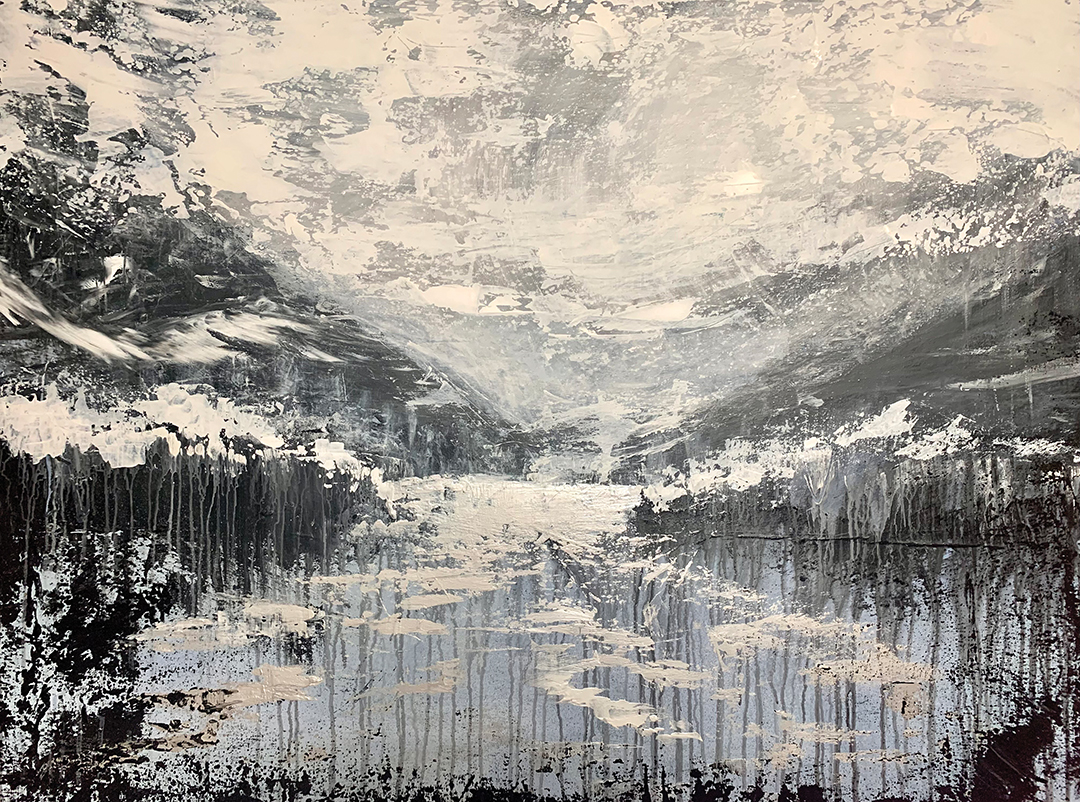
Photo: Amanda Gahler
A Sunday afternoon 75 years ago, Maple Grove was surprised by a doozey of a storm.
You may have heard about the big twister of ’39 that took a ¼ mile-wide swath out of Anoka and Champlain, but few people know that the same tornado tore through Maple Grove, leaving devastation in its wake. Fewer people lived in the area at the time, but those who were hit were hit hard. Photographs of the wreckage found at the Maple Grove Historical Preservation Society Museum tell us part of the story and some survivors fill in the gaps.
Disaster Strikes
The headline of the Minneapolis Tribune on the morning of June 19, 1939, read Ten Known Dead as Tornado Rips Anoka and Champlin. The funnel ended up causing eleven deaths and leaving 222 people injured along its 25 mile path. It was reported in papers as far away as Mobile, Alabama where it was said to have “jumped along the countryside like a giant, destructive grasshopper.” The “jumping” traveled from the southwest quadrant of Maple Grove in a path toward the northeast before entering Champlin.
A Close Call
An eye witness, huddled in the walkout foundation of an old barn just north of Weaver Lake, watched from the west as the twister set its path of destruction. Speaking many years later from his home in Albertville, Harold Grambart remembers being at his sister Dorothy’s birthday party at the time. She was two years old, he was seven.
Older female cousins from across the road (Hwy. 101) had come with their family after church at St. John’s Lutheran, to celebrate the occasion. “My dad was watching the storm as we played softball,” Grambart says. “It got so dark we could hardly see at all and dad got us all into the old barn. We looked across the lake and could see Richard Gelle’s barn go up into the air. You could recognize each building up in the air, then it would disintegrate. Some things landed in the lake.”
Grambart’s grandmother and two uncles lived across the lake from the Gelles. “Dad was upset seeing the house go and knowing it was by his mother’s place,” Grambart continues. “The girls were all crying. They were all more scared than I was because I wasn’t as thoughtful of how dangerous it could be.”
After the twister passed, the family quickly drove to the Grambart homestead. “There were no leaves on the trees, just limbs. The first thing we seen was Uncle Pete’s Sunday suit pants hanging in a tree. That really scared us!”
They rushed around debris to find an elderly Grandma Lena Grambart, sitting in her rocking chair in the only room that remained of the house. “Grandma was sitting in the kitchen just all [covered in] dirt and mud with a little scratch on her cheek, bible in her lap,” Grambart recalls the memory with long echoing amazement in his voice. The hard-of-hearing Grandma Grambart had not realized anything was amiss until she noticed things flying around the room. Laughably, the house was deemed by authorities to be “livable” and since Grandma Grambart had insurance, she was given only a quilt by the Red Cross.
[place Grambart picture as close to this copy as possible]
The Initial Shock
Rollie Rambow was 10 years old at the time but remembers the day well. His family’s farm sat on the northwest rise above Fish Lake. The Wascheck brothers and their hired man had borrowed the Rambow’s boat to go fishing. When the sky grew dark and it began to rain, they came to the house for a visit.
“Their hired man watched the developing weather system and advised us to go into a small ravine. He had experienced tornadoes before, while none of us had seen one. As the tornado developed, we watched as it struck each farmstead. Debris would rise into the air,” Rambow says.
Rambow’s parents, he and his older brother and four guests huddled for 20 minutes in the ravine while the tornado passed less than 400 yards to the east. The Waschek’s watched as their house and farm buildings were leveled, followed by Rambow’s uncle Louis’s barn. The Louis Rambow farmhouse still stands on Quarles road—just another pleasant home on a quiet neighborhood street, betraying no hint of its storied past.
One of Rollie Rambow’s older sisters, Bernice, lived with her husband Ted Gelle on a farm along the west bank of Rice Lake, next door to Louis Rambow. The Gelle family had returned from church that Sunday, June 18th to eat dinner and sit on the front porch. In a Maple Grove Preservation Society record, 44 years after the fact, Gelle recalled the day vividly: “The weather was so close and muggy…almost to the point where it was difficult to breathe. As I sat there I noticed the sparrows sat in the trees and appeared to be getting ready to roost as they do at night. Instead of chirping they seemed to peep—real sad, like baby chicks.”
“I noticed one big black cloud that did not move,” remembers Gelle. “All the other clouds were moving and slowly all clouds started to move towards that one black cloud. At about 2:10 p.m. that big black cloud started to spin and the big black funnels struck down to the ground moving with tremendous velocity. The fear and helplessness that we experienced made us think that no way we would ever be able to live through it.”
The Gelles, along with their two-year-old daughter Carol, did live through the storm. They watched from a ditch while the Rambow windmill was blown upward and held in place by the winds before crashing down to its original location.
Rambow also remembers hearing about his sister Bernice Gelle’s cow being lifted and carried into a muddy part of Rice Lake. It was later rescued and it recovered. As a 10-year-old farm boy, Rambow says it was “terrifying yet exciting.”
After crossing Rice Lake, the tornado continued north to level Maple Grove’s Town Hall and a number of other farms. Maple Grove families along the twisters path were lucky to survive.
The Aftermath
The property devastation was painful, but it was a time when “immediate neighbors quickly came to help clean up debris, repair and replace buildings,” remembers Rambow.
Afterwards, strange and amazing stories emerged: a piece of straw imbedded in a tree trunk; cows wandering down the roads and through the woods, their fences gone; foot-high cornfields being “ripped off at ground level” as if mowed; a four-buckle lodged in the engine of a truck; looters carrying away dazed and crippled chickens as owners returned to their homes; the theft of 250 bushels of grain from a granary that was the only structure left standing at one particular farm; a cement slab impaled so deeply by a 4×4 that it took a team of horses to extract; a glass lampshade from the Waschek place discovered unharmed, rolled up in a rug and sitting ½ mile away in the Louis Rambow house. And finally, an event that seems all too familiar today, bumper to bumper traffic as sightseers came out to survey the damage.
75 Years Later
The storm’s path today would have left massive destruction at well-known locations; The Hennepin County Fairgrounds and Lord of Life Lutheran Church would surely have been demolished. A straight line of homes from the Four Seasons housing development to just south of Weaver Lake would have been hurled into the air. The next major structure under serious threat would have been Weaver Lake Elementary school followed by parts of Boston Scientific and the rest stop on Hwy. I-94. Crossing Rice Lake, it would have headed straight for the Grove Christian Center and the Maple Grove Arboretum, winds perhaps launching the Angel of Hope into high flight. Sweeping the edge of Maple Grove Senior High and the sports dome, the twister would have crossed Hwy. 610 and traveled directly through the Elm Creek Park Reserve. The newly renovated Pierre Bottineau house, which missed the storm’s damage in 1939 in its original location, ironically has been moved into its path.
The danger of this same storm in Maple Grove today would be multiplied by a population of 65,000+. Travelers on major interstate, Hwy. I-94, perhaps unaware of the danger they were motoring directly into, would accelerate the chaos. The one place you want standing after a storm, a medical center like Maple Grove Hospital, would remain slightly out of the tornado’s path. Seventy-five years later (June 18, 2014), here’s to hoping we never find out.
QUOTES: “Tornados are not supposed to cross water. This one went to Rice Lake, tried crossing, turned around and came back and crossed. Therefore weeds never grew in that area.”—Elaine (Rambow) Engels (daughter on the Louis Rambow farm) from historical records
“For a few years after the tornado we would dream about it and suddenly jump to our feet in the middle of a sound sleep thinking that we were having a tornado again. It sounded like a long freight train on a cold morning.”—Ted Gelle (brother-in-law of Rollie Rambow) from historical records
SIDEBAR:
Twister Talk
with Jerrid Sebesta, KARE 11 meteorologist.
There are two myths people of Maple Grove need to know. First, living in a major metropolitan area like the Twin Cities doesn’t “protect” you from tornadoes. Buildings, roads and expanses of concrete do nothing to disrupt the dynamics of a thunderstorm/tornado. Secondly, the same goes for water. Maple Grove is littered with lakes, not to mention a major river just north of town. However, there’s no scientific proof that these create a “barrier of protection”.
In the case of a tornado, the safest place to be in your home is below ground. The problem with homes in Maple Grove is many don’t have basements…they have lower-levels, which may only sit three to five feet below ground. In this case, go to a lower-level room with no windows. A utility room or a downstairs bathroom, for example, may be best. Many split-level homes have crawl spaces. This is another good option if there’s time. Bottom line, stay away from windows and get as much material between you and the outside walls as possible. When in your safe location, crouch down, cover your head and your children in the event of flying debris.
&
See additional pictures of the tornado of ’39 at the Maple Grove History Museum, maplegrovemnhistory.org.
“For a few years after the tornado we would dream about it and suddenly jump to our feet in the middle of a sound sleep thinking that we were having a tornado again. It sounded like a long freight train on a cold morning.”—Ted Gelle (brother-in-law of Rollie Rambow) from historical records
You may have heard about the big twister of ’39 that took a ¼ mile-wide swath out of Anoka and Champlain, but few people know that the same tornado tore through Maple Grove, leaving devastation in its wake. Fewer people lived in the area at the time, but those who were hit were hit hard. Photographs of the wreckage found at the Maple Grove Historical Preservation Society Museum tell us part of the story and some survivors fill in the gaps.
Disaster Strikes
The headline of the Minneapolis Tribune on the morning of June 19, 1939, read Ten Known Dead as Tornado Rips Anoka and Champlin. The funnel ended up causing eleven deaths and leaving 222 people injured along its 25 mile path. It was reported in papers as far away as Mobile, Alabama where it was said to have “jumped along the countryside like a giant, destructive grasshopper.” The “jumping” traveled from the southwest quadrant of Maple Grove in a path toward the northeast before entering Champlin.

A Close Call
An eye witness, huddled in the walkout foundation of an old barn just north of Weaver Lake, watched from the west as the twister set its path of destruction. Speaking many years later from his home in Albertville, Harold Grambart remembers being at his sister Dorothy’s birthday party at the time. She was two years old, he was seven.
Older female cousins from across the road (Hwy. 101) had come with their family after church at St. John’s Lutheran, to celebrate the occasion. “My dad was watching the storm as we played softball,” Grambart says. “It got so dark we could hardly see at all and dad got us all into the old barn. We looked across the lake and could see Richard Gelle’s barn go up into the air. You could recognize each building up in the air, then it would disintegrate. Some things landed in the lake.”
Grambart’s grandmother and two uncles lived across the lake from the Gelles. “Dad was upset seeing the house go and knowing it was by his mother’s place,” Grambart continues. “The girls were all crying. They were all more scared than I was because I wasn’t as thoughtful of how dangerous it could be.”
After the twister passed, the family quickly drove to the Grambart homestead. “There were no leaves on the trees, just limbs. The first thing we seen was Uncle Pete’s Sunday suit pants hanging in a tree. That really scared us!”
They rushed around debris to find an elderly Grandma Lena Grambart, sitting in her rocking chair in the only room that remained of the house. “Grandma was sitting in the kitchen just all [covered in] dirt and mud with a little scratch on her cheek, bible in her lap,” Grambart recalls the memory with long echoing amazement in his voice.
The hard-of-hearing Grandma Grambart had not realized anything was amiss until she noticed things flying around the room. Laughably, the house was deemed by authorities to be “livable” and since Grandma Grambart had insurance, she was given only a quilt by the Red Cross.

The Initial Shock
Rollie Rambow was 10 years old at the time but remembers the day well. His family’s farm sat on the northwest rise above Fish Lake. The Wascheck brothers and their hired man had borrowed the Rambow’s boat to go fishing. When the sky grew dark and it began to rain, they came to the house for a visit.
“Their hired man watched the developing weather system and advised us to go into a small ravine. He had experienced tornadoes before, while none of us had seen one. As the tornado developed, we watched as it struck each farmstead. Debris would rise into the air,” Rambow says.
Rambow’s parents, he and his older brother and four guests huddled for 20 minutes in the ravine while the tornado passed less than 400 yards to the east. The Waschek’s watched as their house and farm buildings were leveled, followed by Rambow’s uncle Louis’s barn. The Louis Rambow farmhouse still stands on Quarles road—just another pleasant home on a quiet neighborhood street, betraying no hint of its storied past.
One of Rollie Rambow’s older sisters, Bernice, lived with her husband Ted Gelle on a farm along the west bank of Rice Lake, next door to Louis Rambow. The Gelle family had returned from church that Sunday, June 18th to eat dinner and sit on the front porch. In a Maple Grove Preservation Society record, 44 years after the fact, Gelle recalled the day vividly: “The weather was so close and muggy…almost to the point where it was difficult to breathe. As I sat there I noticed the sparrows sat in the trees and appeared to be getting ready to roost as they do at night. Instead of chirping they seemed to peep—real sad, like baby chicks.”
“I noticed one big black cloud that did not move,” remembers Gelle. “All the other clouds were moving and slowly all clouds started to move towards that one black cloud. At about 2:10 p.m. that big black cloud started to spin and the big black funnels struck down to the ground moving with tremendous velocity. The fear and helplessness that we experienced made us think that no way we would ever be able to live through it.”
The Gelles, along with their two-year-old daughter Carol, did live through the storm. They watched from a ditch while the Rambow windmill was blown upward and held in place by the winds before crashing down to its original location.
Rambow also remembers hearing about his sister Bernice Gelle’s cow being lifted and carried into a muddy part of Rice Lake. It was later rescued and it recovered. As a 10-year-old farm boy, Rambow says it was “terrifying yet exciting.”
After crossing Rice Lake, the tornado continued north to level Maple Grove’s Town Hall and a number of other farms. Maple Grove families along the twisters path were lucky to survive.

The Aftermath
The property devastation was painful, but it was a time when “immediate neighbors quickly came to help clean up debris, repair and replace buildings,” remembers Rambow.
Afterwards, strange and amazing stories emerged: a piece of straw imbedded in a tree trunk; cows wandering down the roads and through the woods, their fences gone; foot-high cornfields being “ripped off at ground level” as if mowed; a four-buckle lodged in the engine of a truck; looters carrying away dazed and crippled chickens as owners returned to their homes; the theft of 250 bushels of grain from a granary that was the only structure left standing at one particular farm; a cement slab impaled so deeply by a 4×4 that it took a team of horses to extract; a glass lampshade from the Waschek place discovered unharmed, rolled up in a rug and sitting ½ mile away in the Louis Rambow house. And finally, an event that seems all too familiar today, bumper to bumper traffic as sightseers came out to survey the damage.
75 Years Later
The storm’s path today would have left massive destruction at well-known locations; The Hennepin County Fairgrounds and Lord of Life Lutheran Church would surely have been demolished. A straight line of homes from the Four Seasons housing development to just south of Weaver Lake would have been hurled into the air. The next major structure under serious threat would have been Weaver Lake Elementary school followed by parts of Boston Scientific and the rest stop on Hwy. I-94. Crossing Rice Lake, it would have headed straight for the Grove Christian Center and the Maple Grove Arboretum, winds perhaps launching the Angel of Hope into high flight. Sweeping the edge of Maple Grove Senior High and the sports dome, the twister would have crossed Hwy. 610 and traveled directly through the Elm Creek Park Reserve. The newly renovated Pierre Bottineau house, which missed the storm’s damage in 1939 in its original location, ironically has been moved into its path.
The danger of this same storm in Maple Grove today would be multiplied by a population of 65,000+. Travelers on major interstate, Hwy. I-94, perhaps unaware of the danger they were motoring directly into, would accelerate the chaos.
The one place you want standing after a storm, a medical center like Maple Grove Hospital, should have remained slightly out of the tornado’s path. Seventy-five years later (June 18, 2014), here’s to hoping we never find out.

Twister Talk
with Jerrid Sebesta, KARE 11 meteorologist.
There are two myths people of Maple Grove need to know:
First, living in a major metropolitan area like the Twin Cities doesn’t “protect” you from tornadoes. Buildings, roads and expanses of concrete do nothing to disrupt the dynamics of a thunderstorm/tornado.
Secondly, the same goes for water. Maple Grove is littered with lakes, not to mention a major river just north of town. However, there’s no scientific proof that these create a “barrier of protection”.
In the case of a tornado, the safest place to be in your home is below ground. The problem with homes in Maple Grove is many don’t have basements…they have lower-levels, which may only sit three to five feet below ground. In this case, go to a lower-level room with no windows. A utility room or a downstairs bathroom, for example, may be best. Many split-level homes have crawl spaces. This is another good option if there’s time. Bottom line, stay away from windows and get as much material between you and the outside walls as possible. When in your safe location, crouch down, cover your head and your children in the event of flying debris.
See additional pictures of the tornado of ’39 at the Maple Grove History Museum, maplegrovemnhistory.org.



























